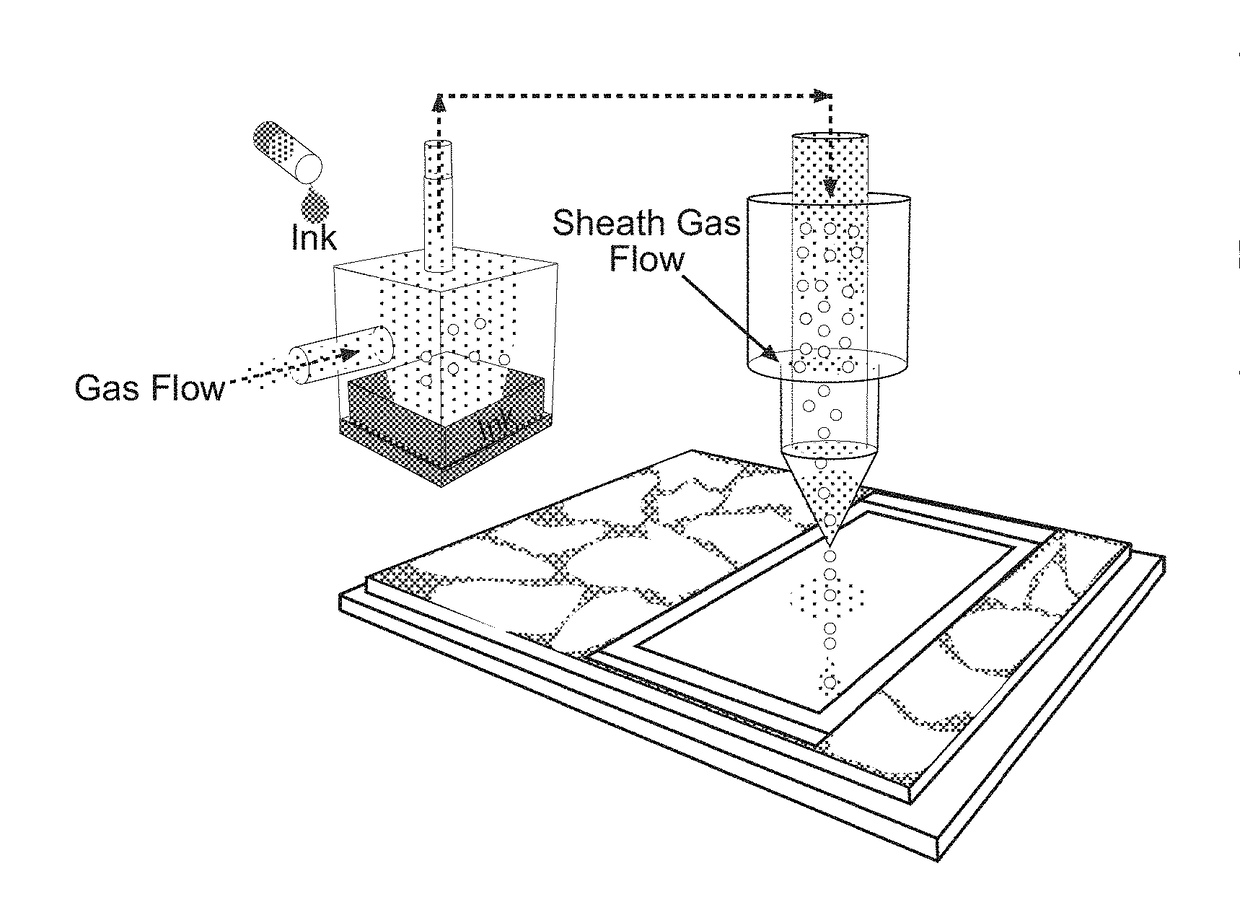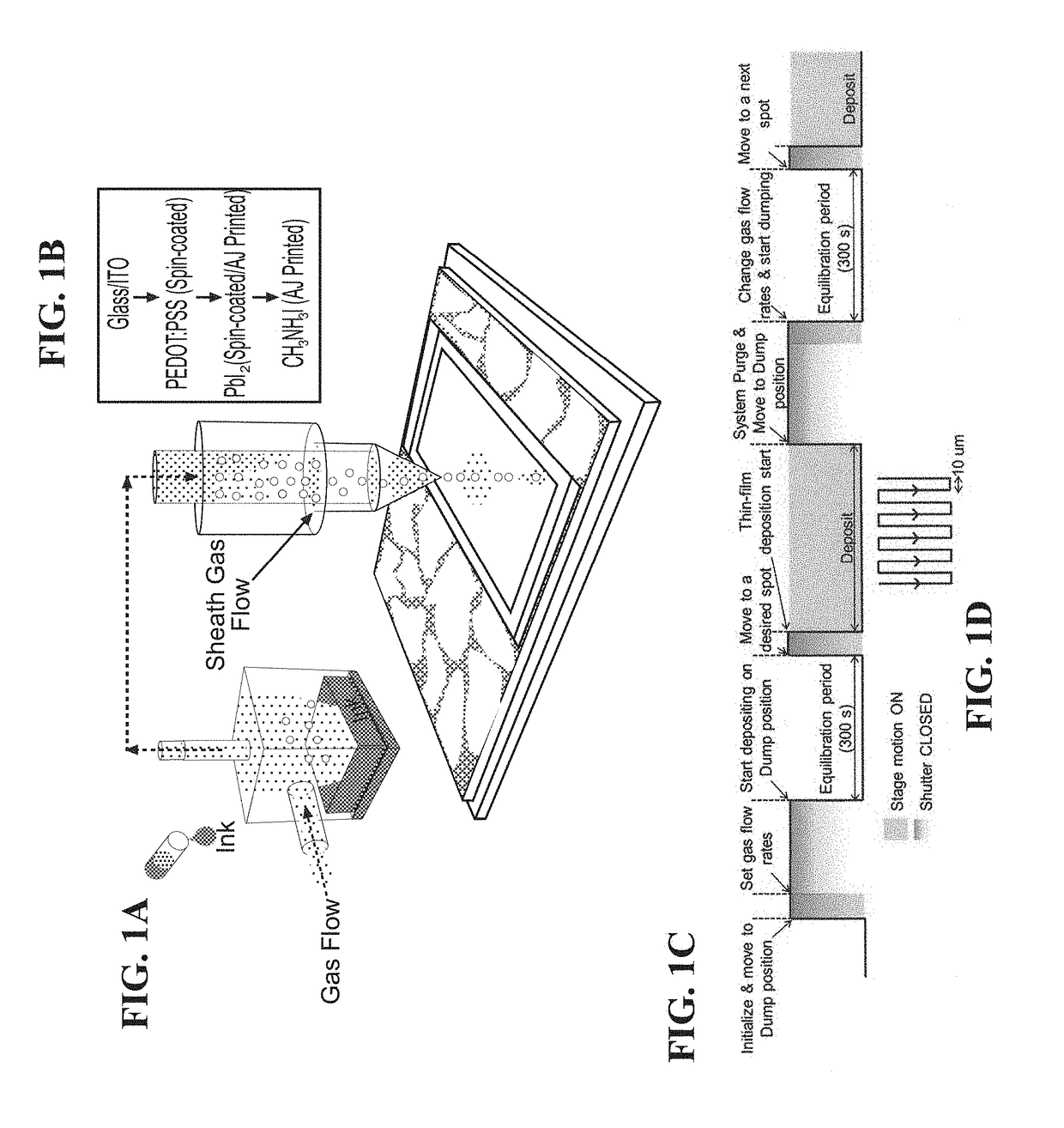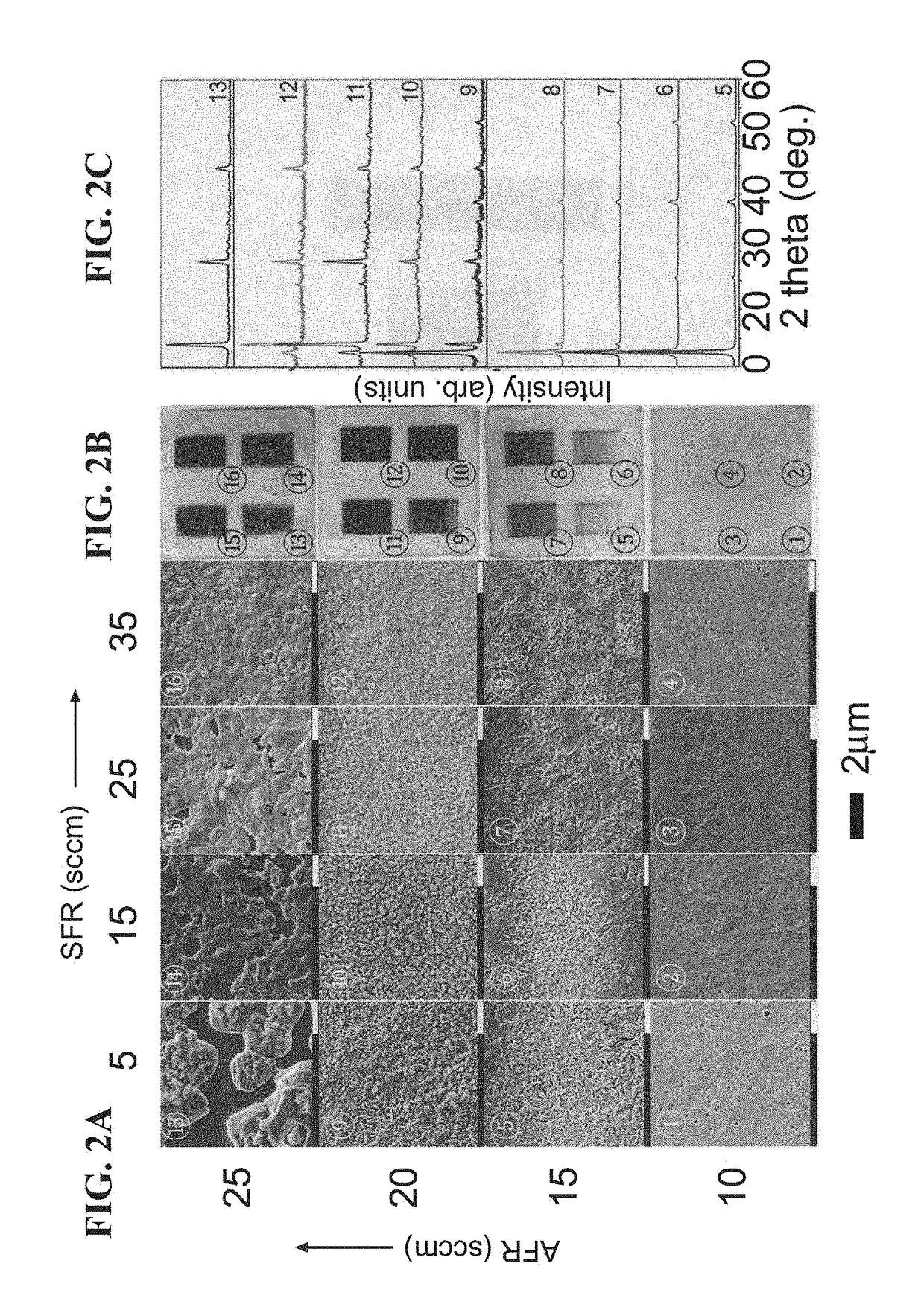Defect mitigation of thin-film hybrid perovskite and direct writing on a curved surface
a technology of thin-film hybrid perovskite and defect mitigation, which is applied in the manufacture of organic semiconductor devices, sustainable manufacturing/processing, and final product manufacturing. it can solve the problems of non-trivial transfer of device results derived from spin-coated photoactive layers in a standard laboratory setup to fabrication level devices
- Summary
- Abstract
- Description
- Claims
- Application Information
AI Technical Summary
Benefits of technology
Problems solved by technology
Method used
Image
Examples
Embodiment Construction
[0061]The performances of lab-scale, all spin-coated, methyl ammonium lead trihalide perovskite-based solar cell devices are subject to a near infinite level of variation based on individuals' expertise. The photovoltaic properties of perovskite solar cells are highly dependent on the active layer film morphology and crystallization, and as such the controlled deposition of defect-free perovskite films is of significant interest towards wide adoption of this inorganic-organic hybrid technology. Mitigating defects during an all-low temperature, solution processed perovskite thin-film growth through automation is highly desirable to facilitate the lab-to-fab process transfer of this emerging solar technology. Critical to this goal is the implementation of novel fabrication protocols which are robust and which have the advantage of full manufacturing compatibility. As a step forward, an aerosol-jet printing technique is presented herein for precisely controlling the thin-film perovskit...
PUM
 Login to View More
Login to View More Abstract
Description
Claims
Application Information
 Login to View More
Login to View More - R&D
- Intellectual Property
- Life Sciences
- Materials
- Tech Scout
- Unparalleled Data Quality
- Higher Quality Content
- 60% Fewer Hallucinations
Browse by: Latest US Patents, China's latest patents, Technical Efficacy Thesaurus, Application Domain, Technology Topic, Popular Technical Reports.
© 2025 PatSnap. All rights reserved.Legal|Privacy policy|Modern Slavery Act Transparency Statement|Sitemap|About US| Contact US: help@patsnap.com



